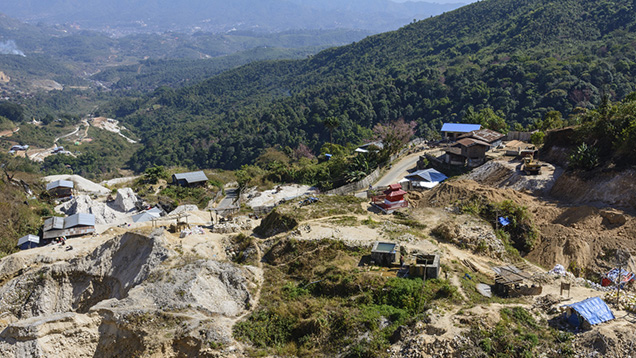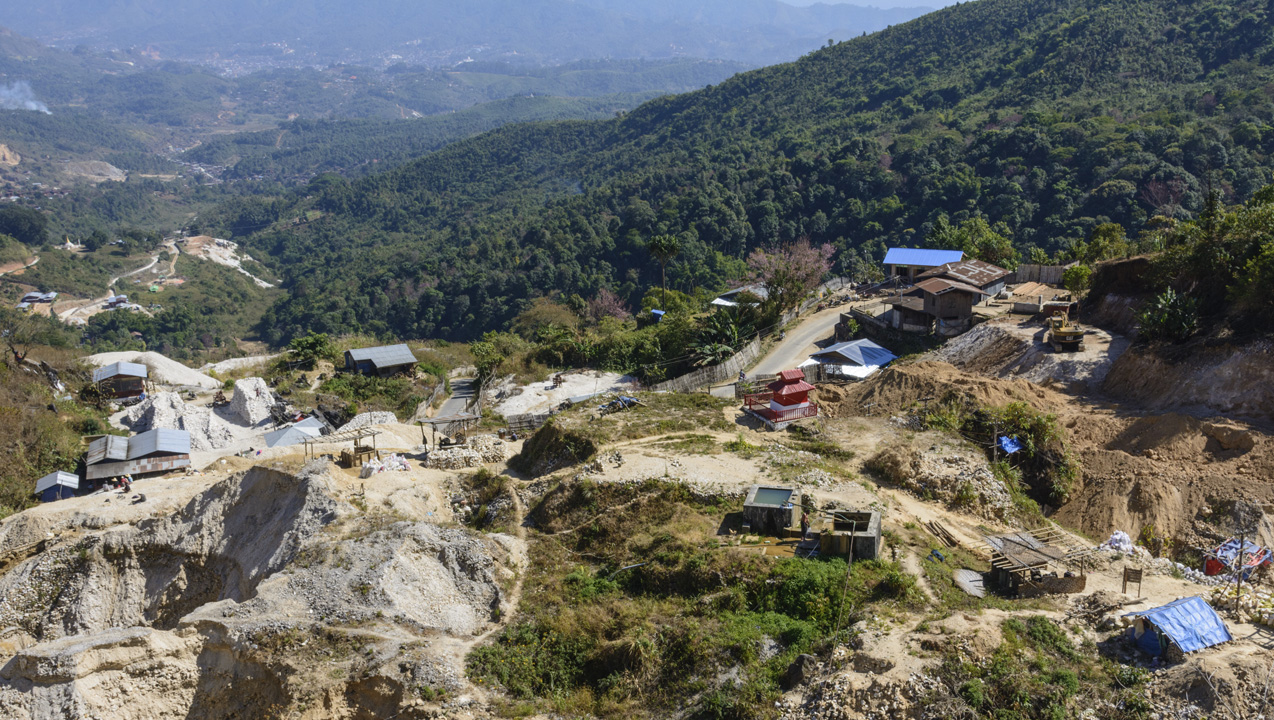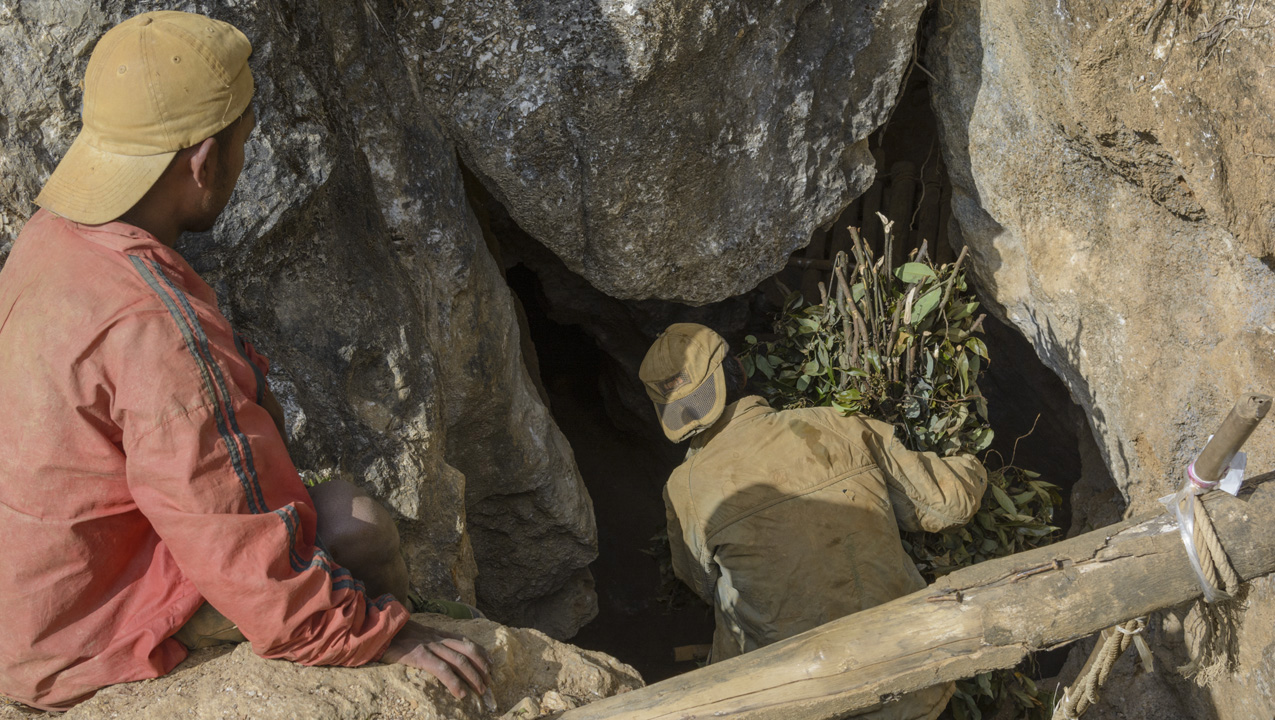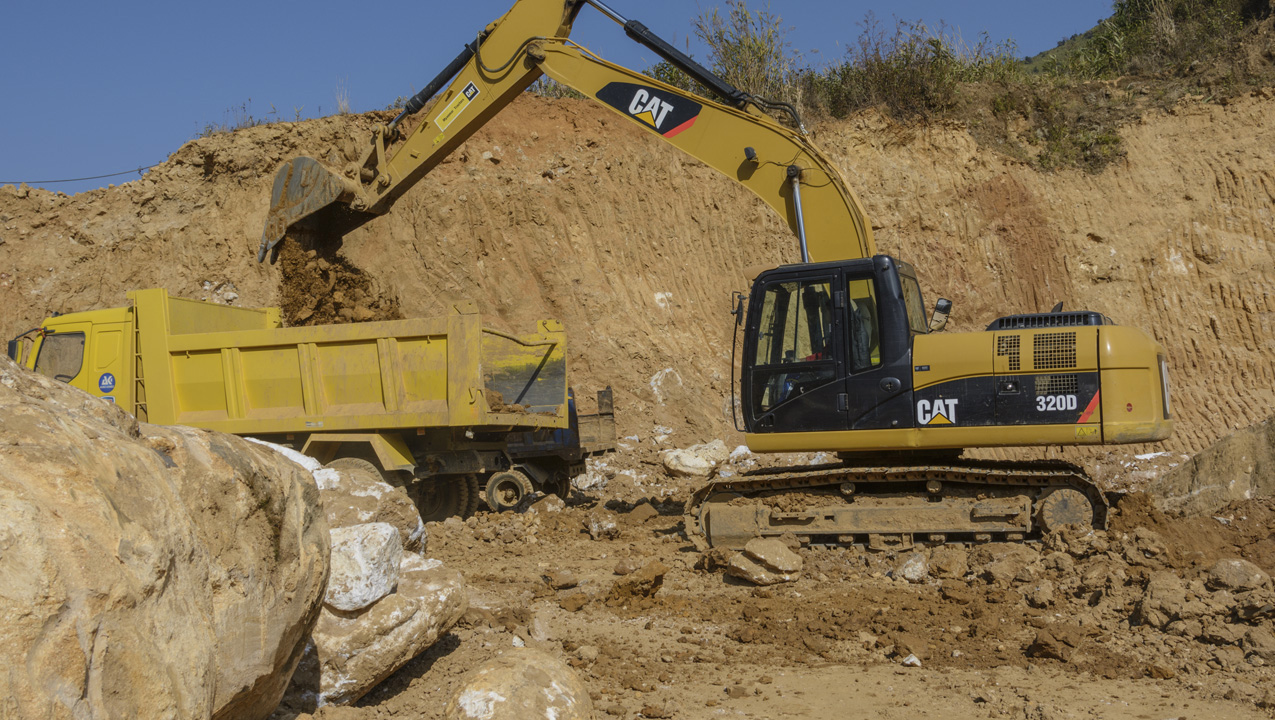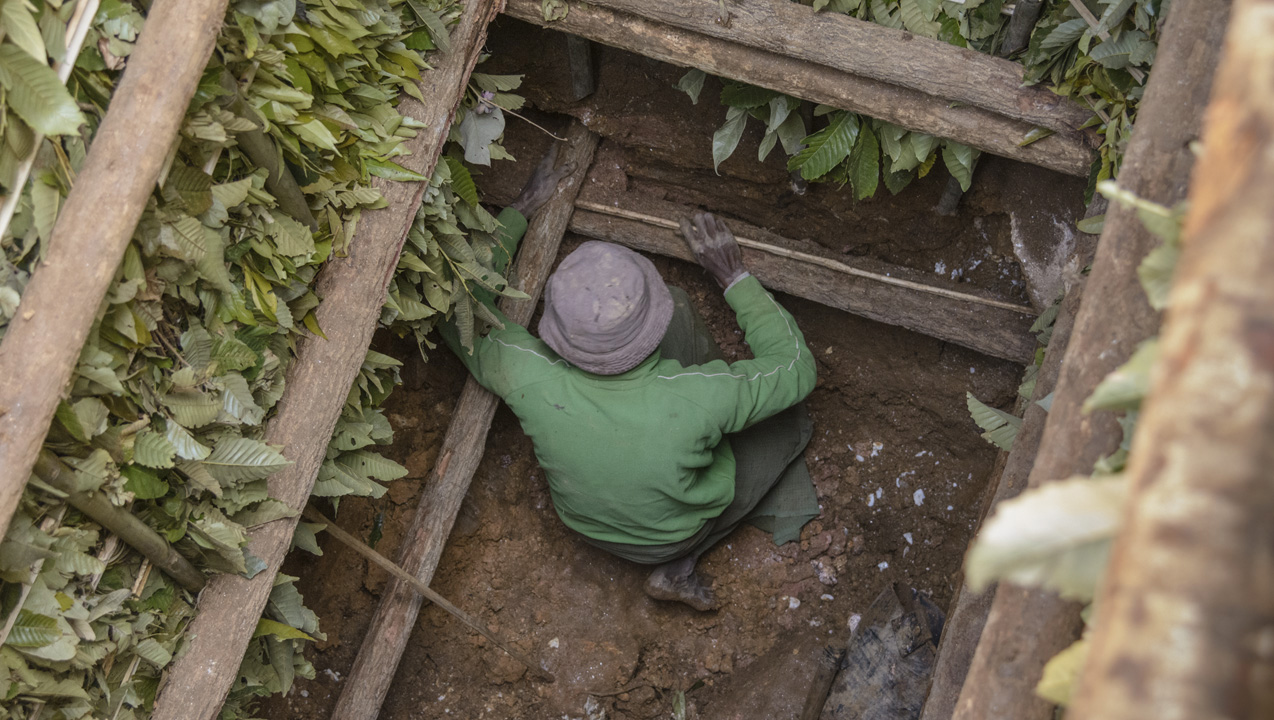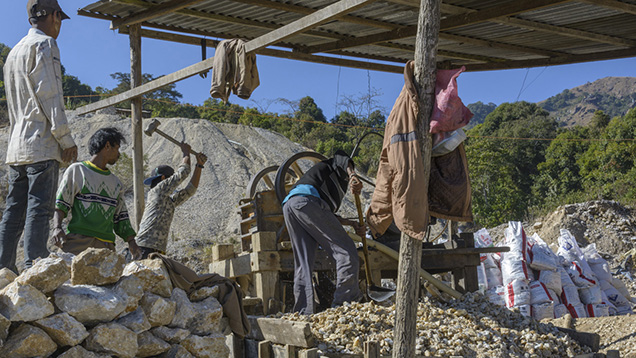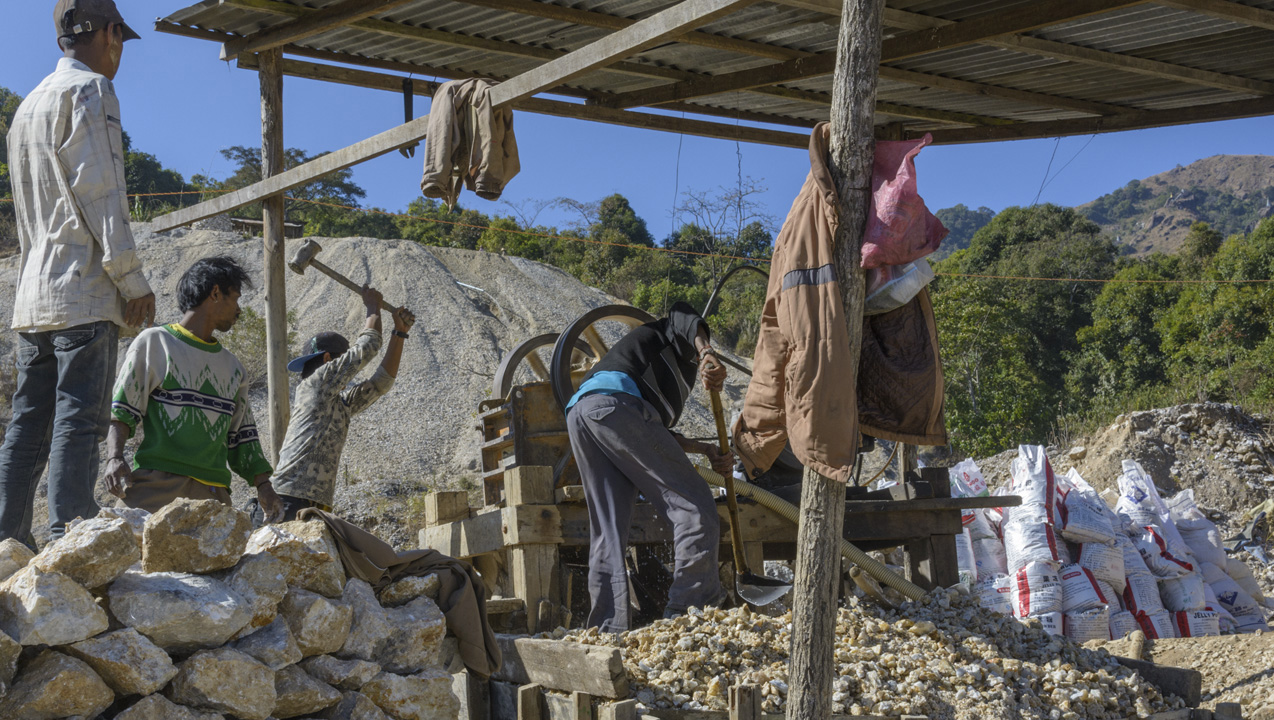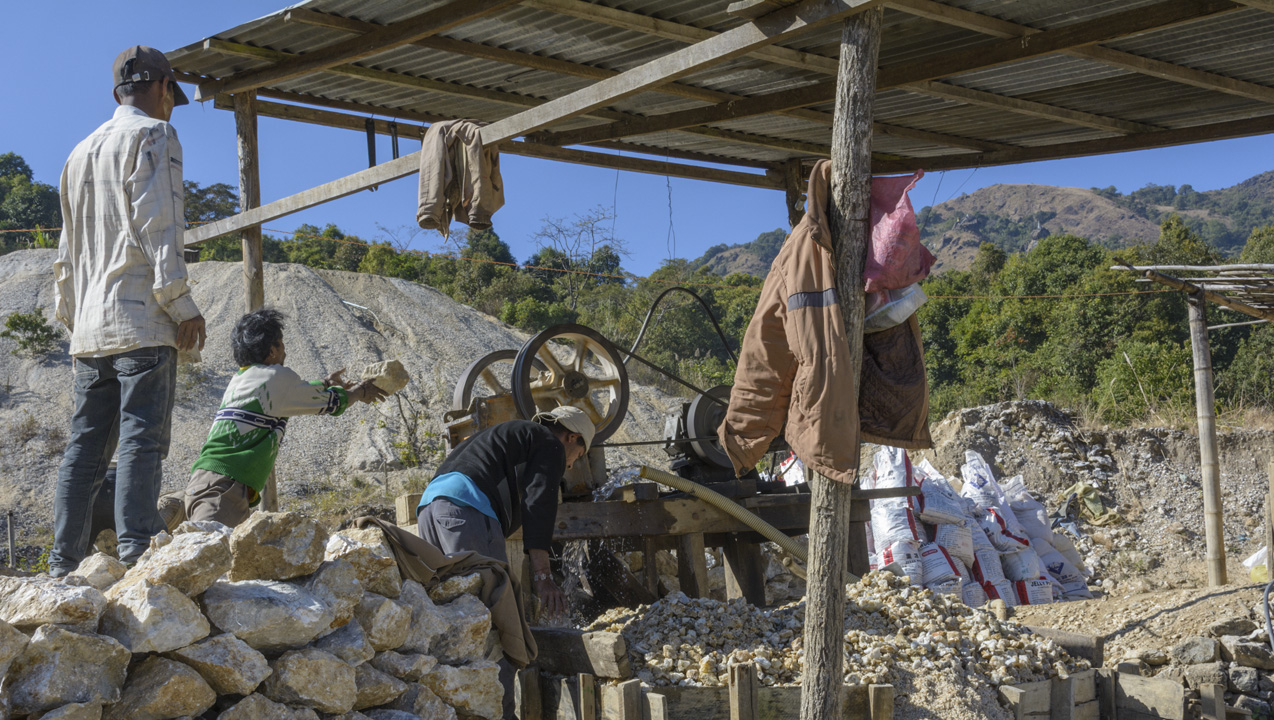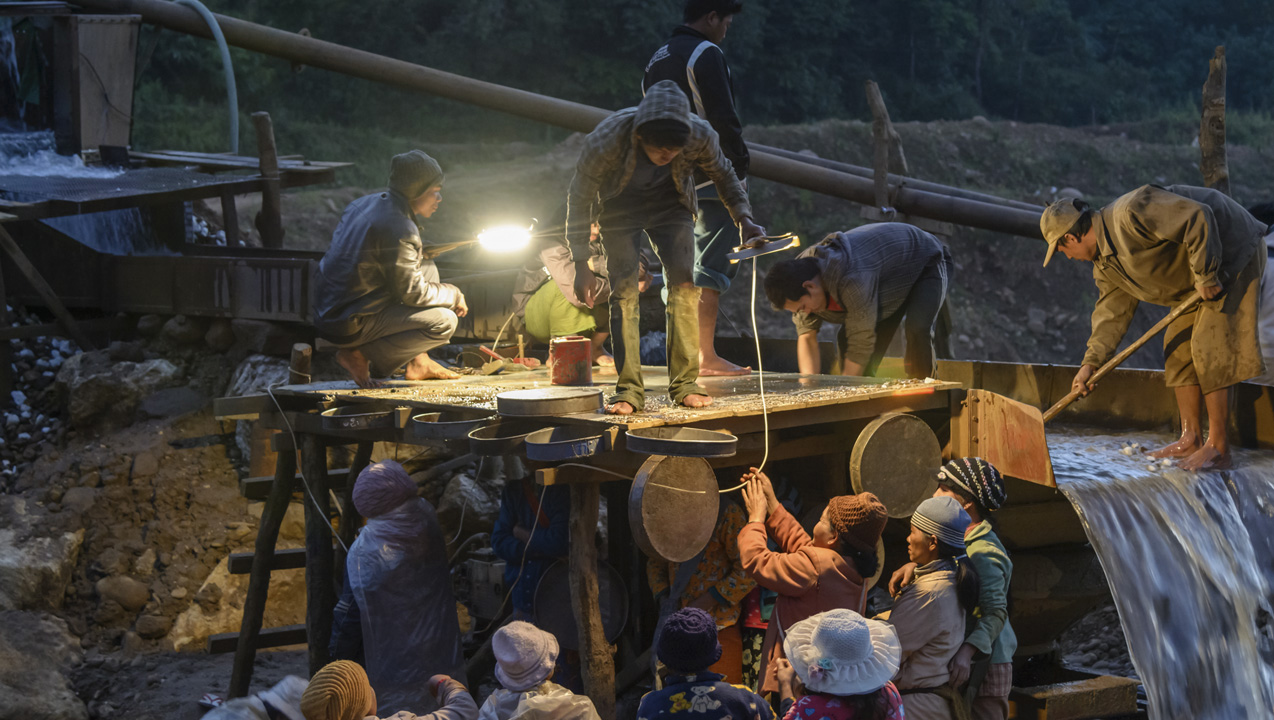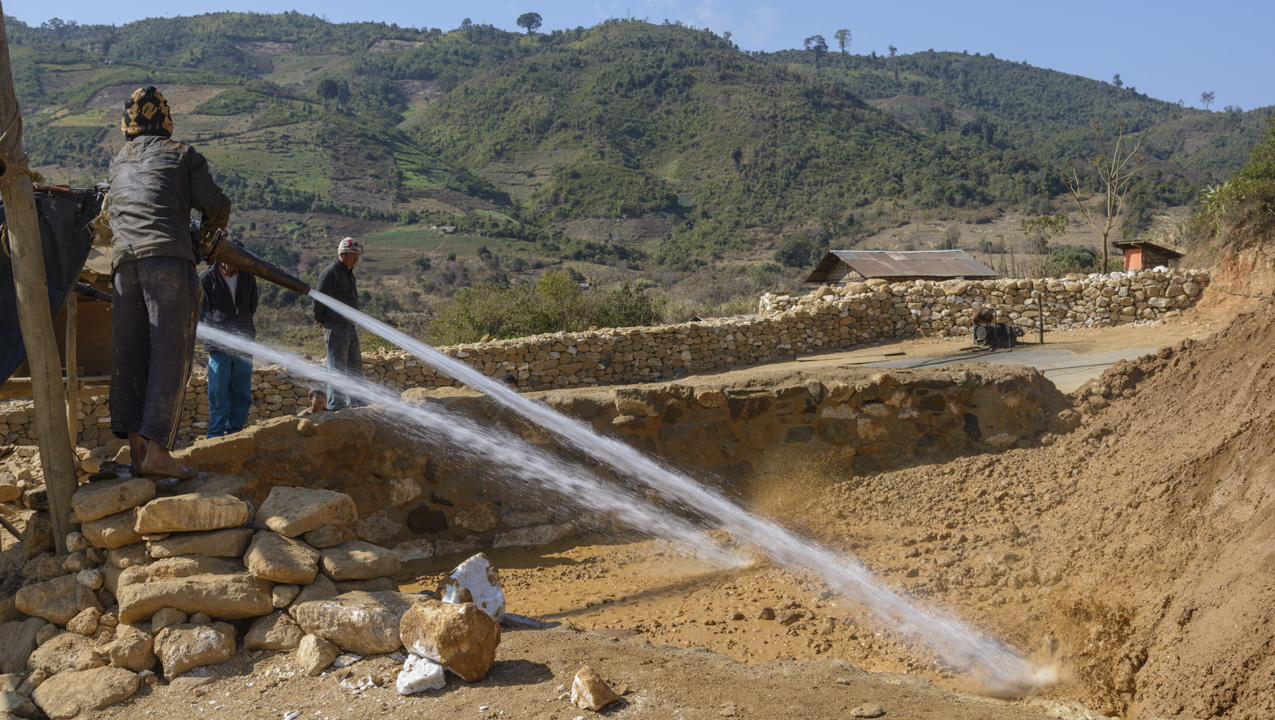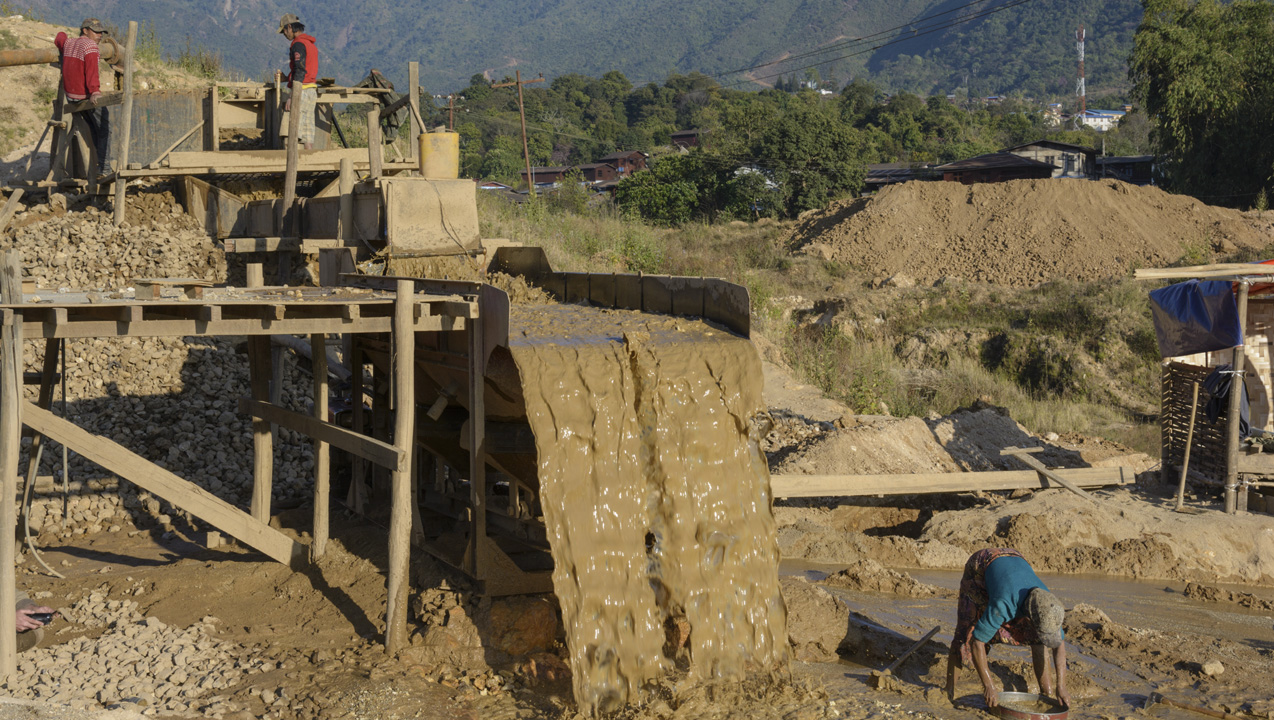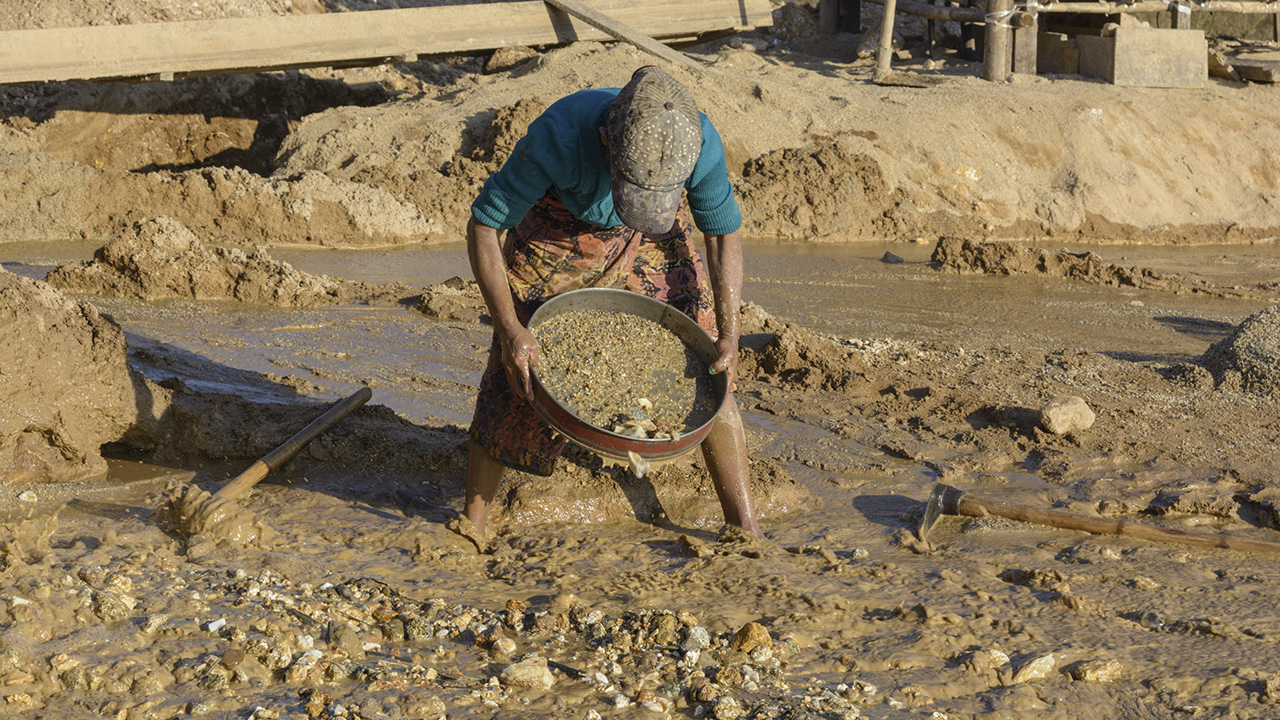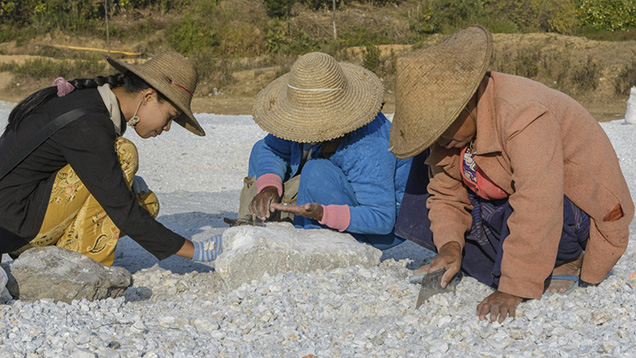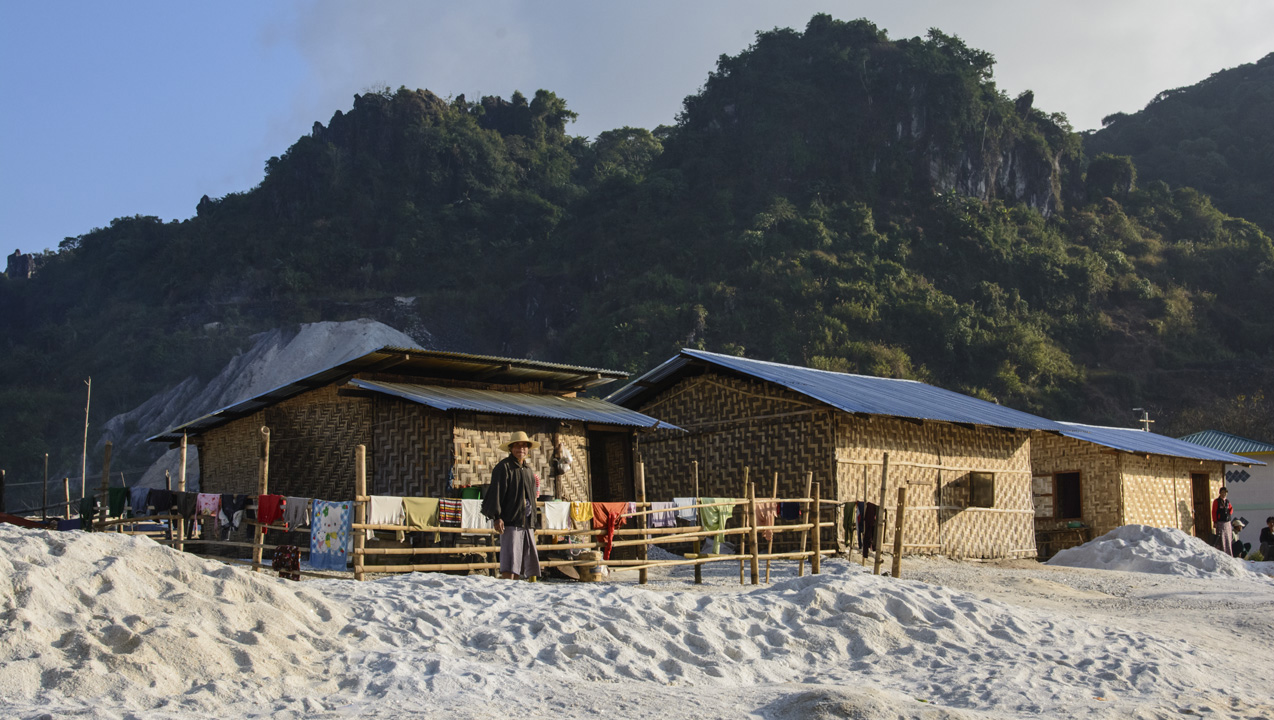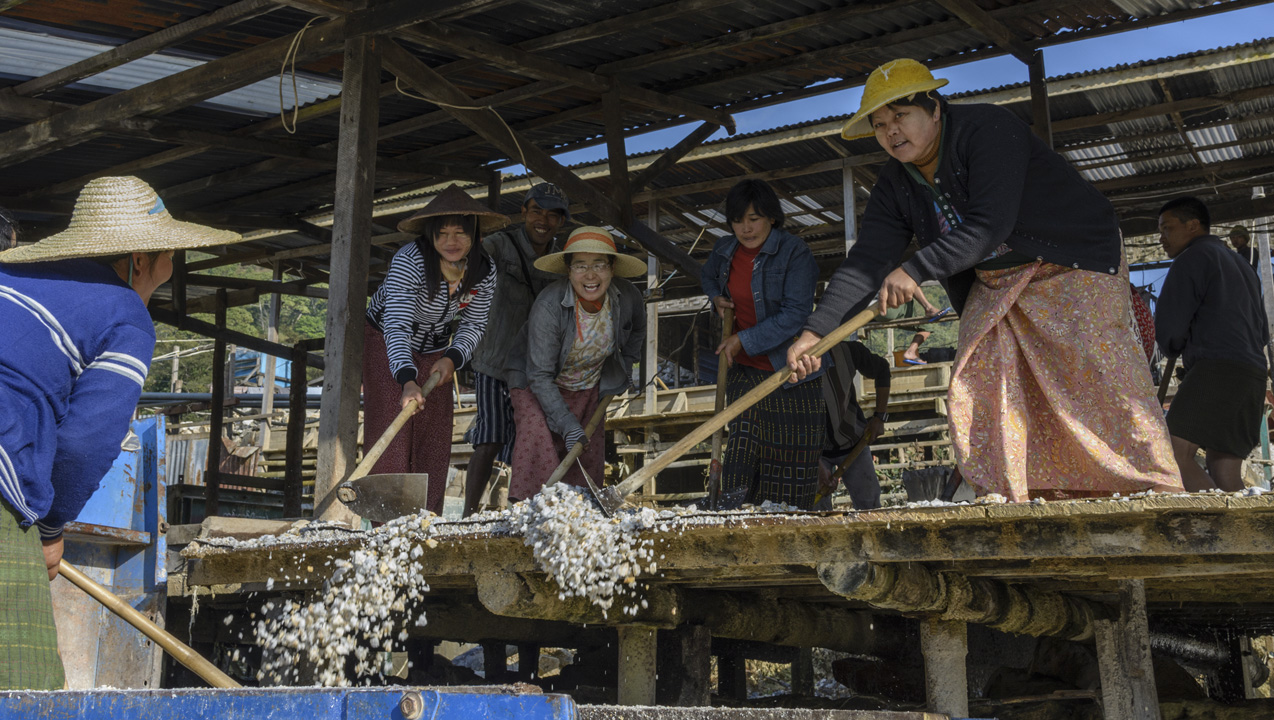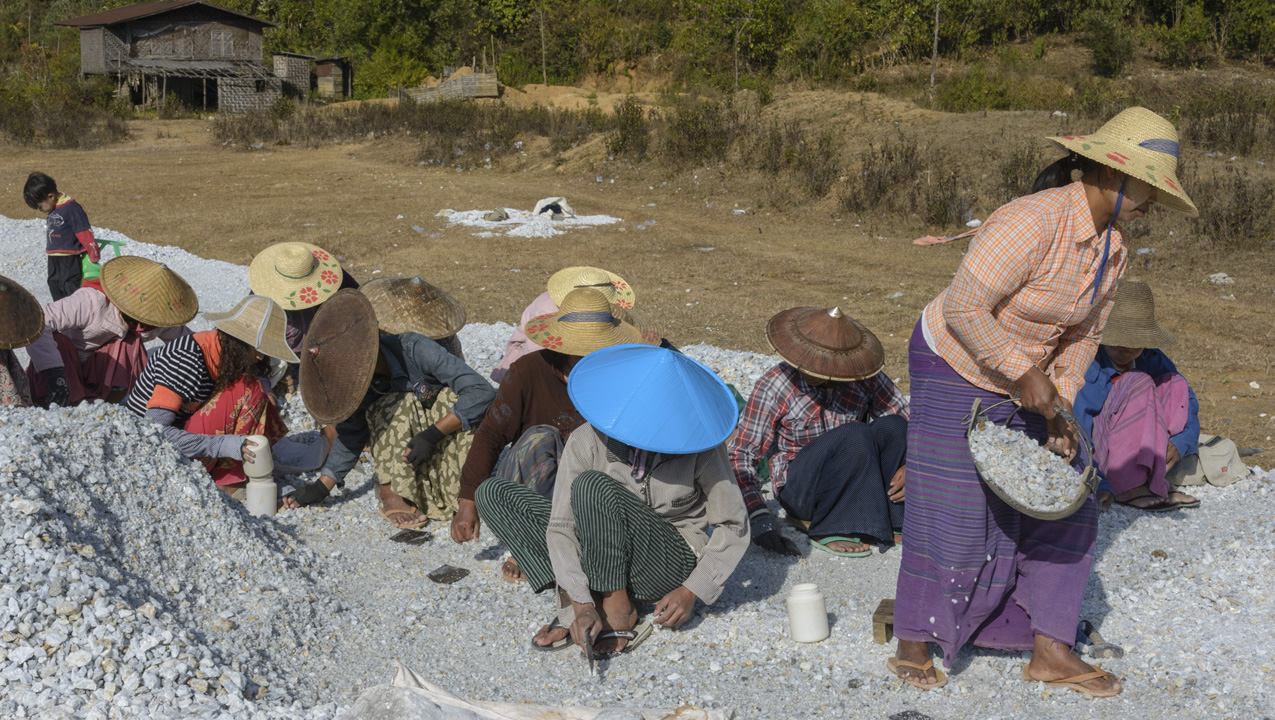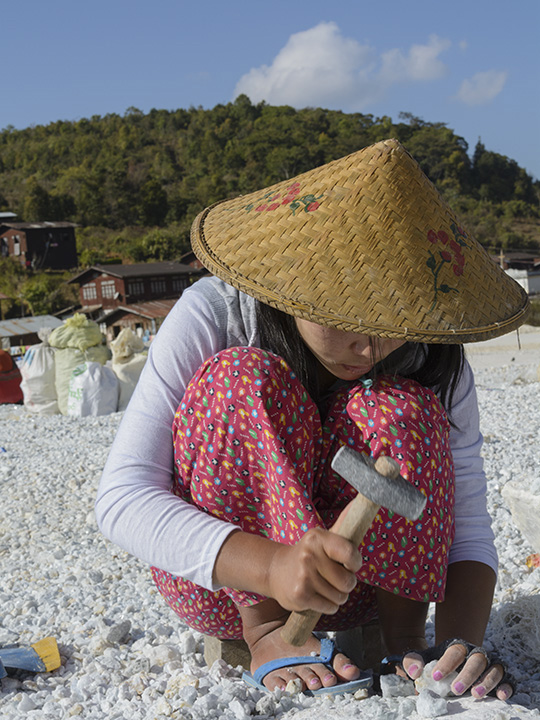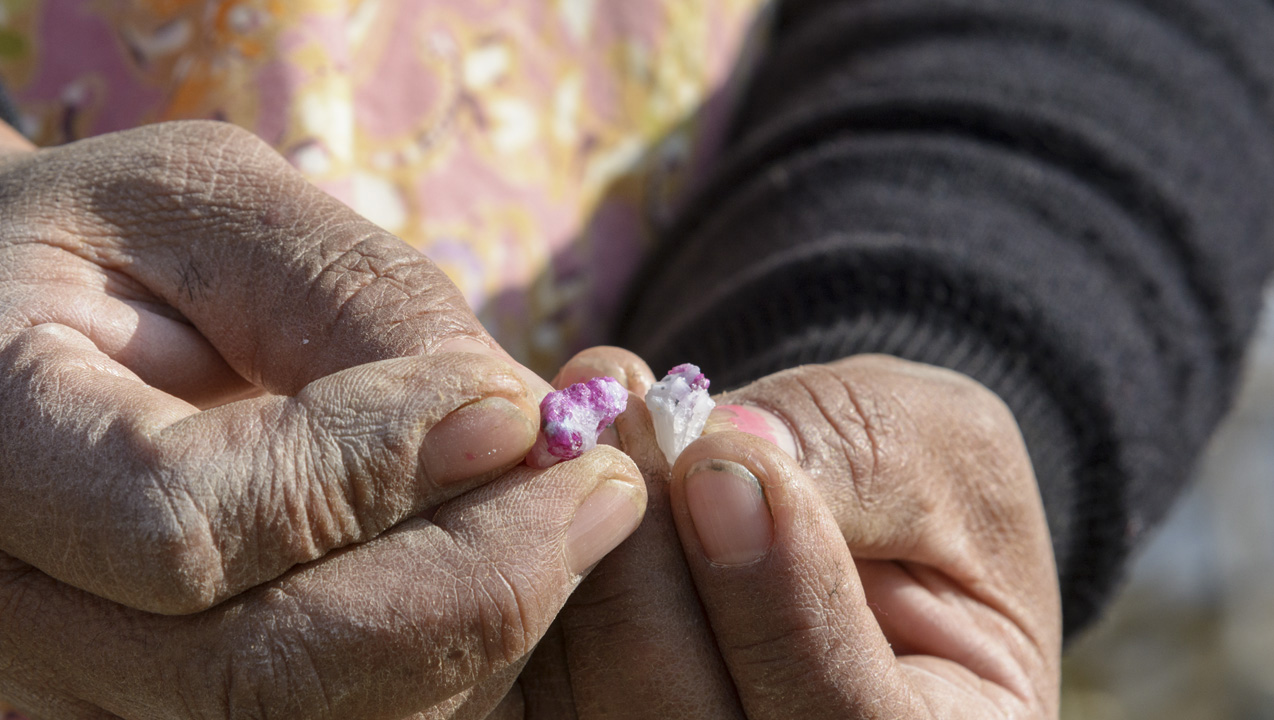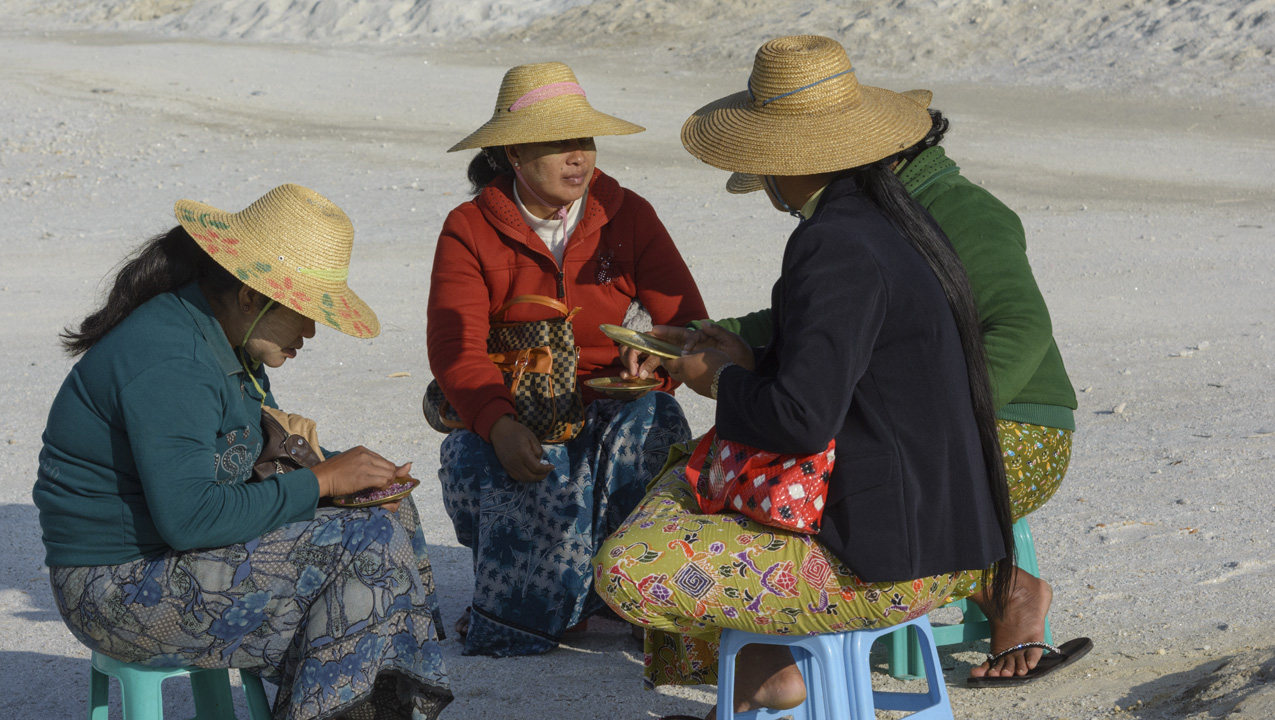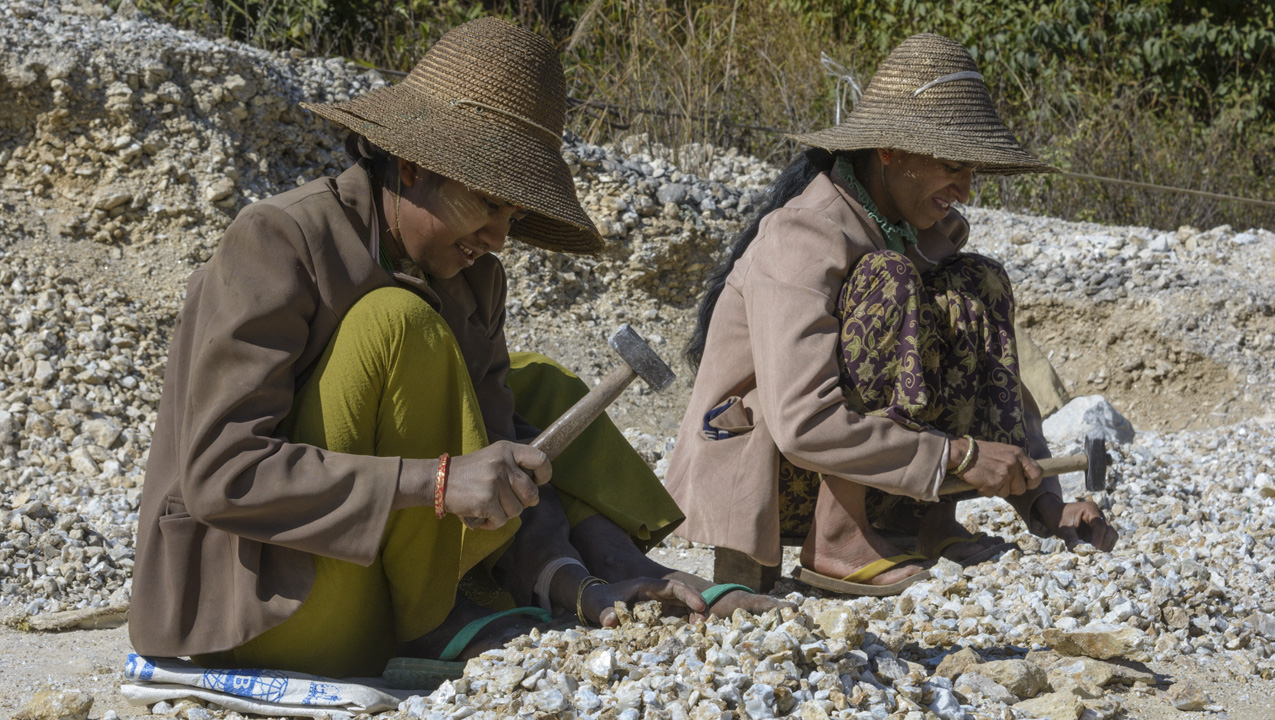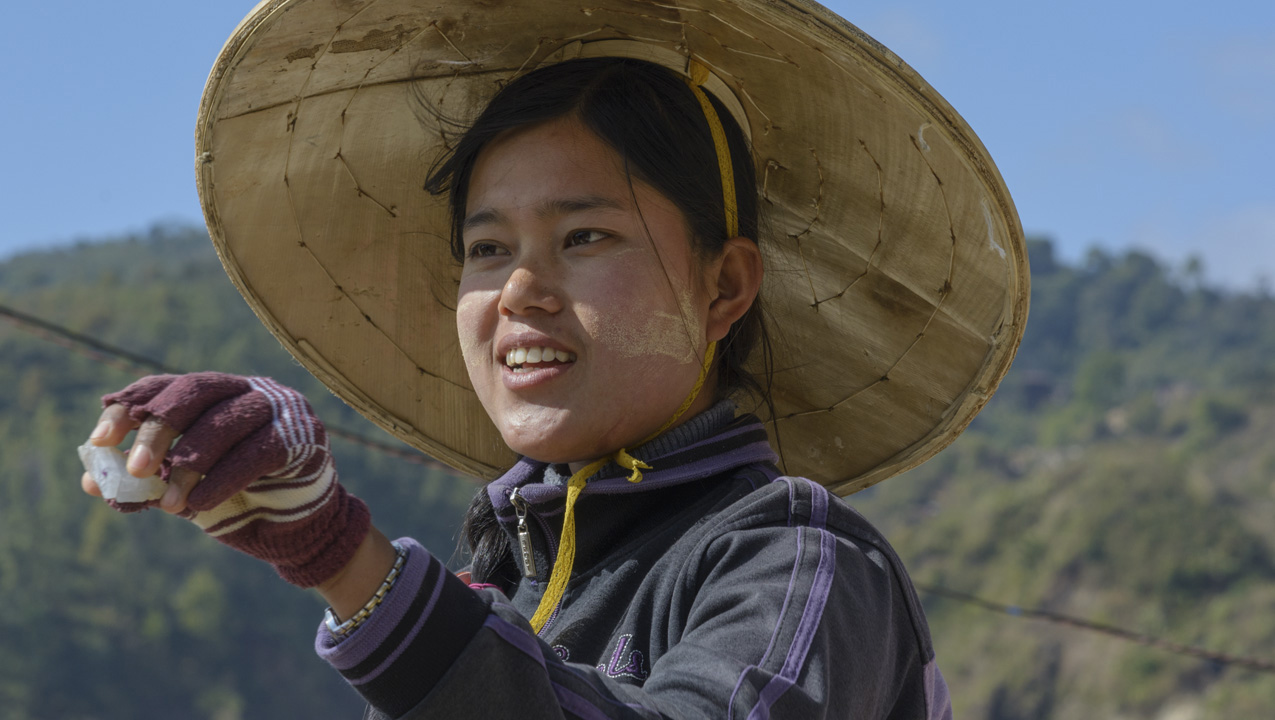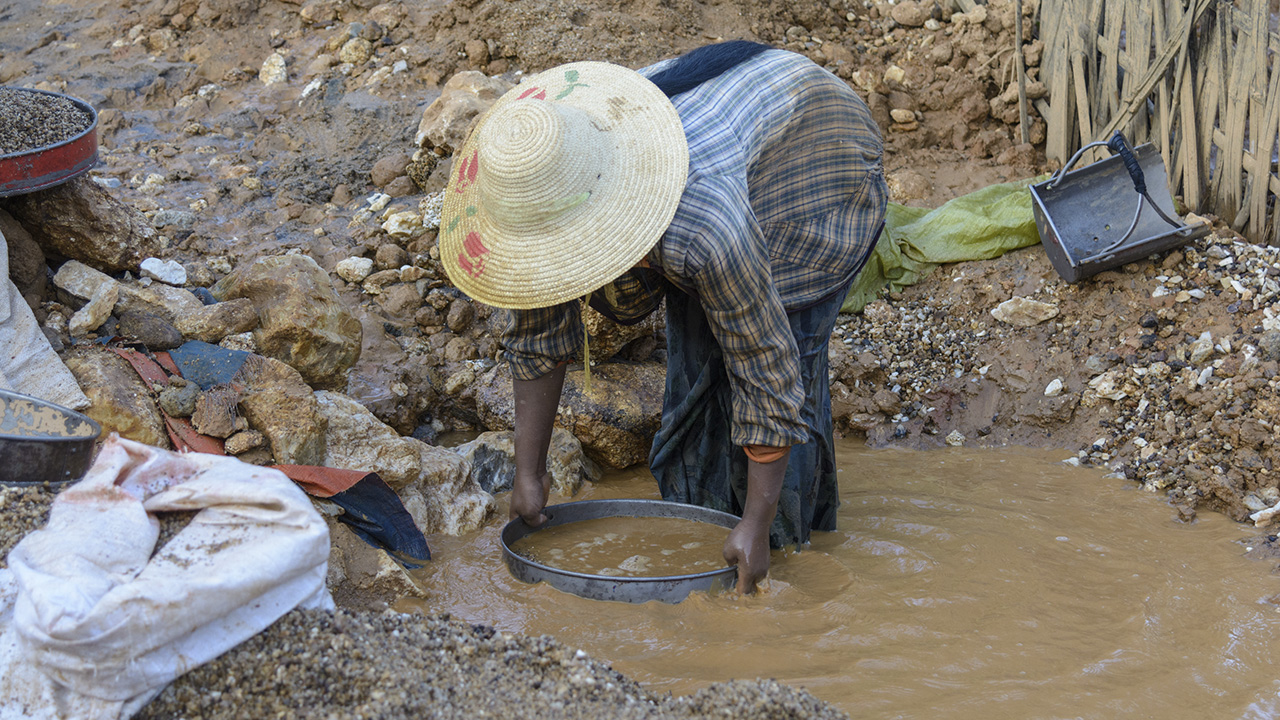Mogok Series, Part 2:
The Expedition, the Mines, and the People
April 11, 2014
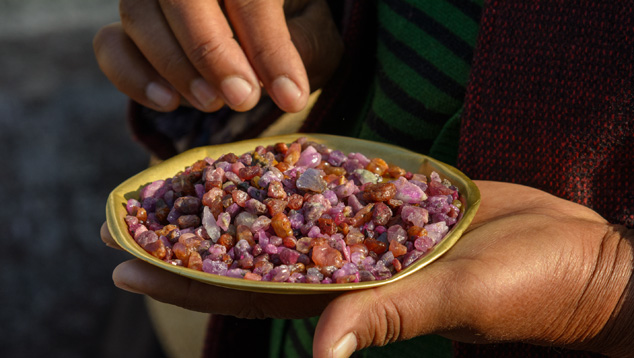
The Expedition
We spent most of December 28 traveling to Mogok, then started early on December 29 and worked late, a common schedule throughout the entire stay. During our time there, we visited numerous mines, markets, cutters, gem painters, and areas of interest like temples and pagodas. Our primary focus was gem mines and markets, performing what Vincent refers to as “doing gemology with your eyes and not your ears,” meaning you get information firsthand at the source, and not secondhand by listening to others.During this expedition, we visited ruby, sapphire, spinel, and peridot mines. We visited all the gem markets in the Mogok Stone Tract area at least once, and most of them multiple times. In an interesting twist, Vincent discovered rough lapis lazuli in the Mogok gem market. When we inquired about this, the dealers said the mine was local and gave us approximate directions.
This led to a midday search for the mine. The original information got us to the right area, but not to the mine itself. We came upon a friendly farmer who turned out to be a former gem miner. At first, there was confusion about what stone we were looking for, and he took off on his motorbike only to bring back the wrong material. That led to his understanding of what we were really after, and he led us on a hike up a hill and through the brush to a lapis lazuli tunnel mine. No one was working it when we arrived, but we were able to confirm that a hard-rock primary lapis lazuli mine existed in the Mogok Stone Tract. (There will be more information about this surprising find in a future report.)
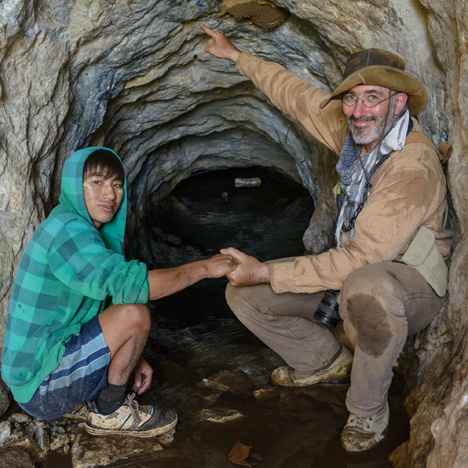
With the help of this young farmer, the authors were able to locate a primary deposit
of lapis lazuli in the Mogok Stone Tract. Photo by Andy Lucas, ©GIA.
of lapis lazuli in the Mogok Stone Tract. Photo by Andy Lucas, ©GIA.
The Mines
For anyone who has witnessed colored stone mining around the world, the gemstone deposits at Mogok are a real treat. Several types of mining are conducted, varying to suit each particular deposit. We observed both alluvial mining of the gem-bearing gravel, called byon, and hard-rock mining of rubies and spinels from the marble itself.Much of the easy-to-reach byon at the valley floor has been mined. Today, mining is spreading on the hillsides and mountains around Mogok and Kyatpyin and beyond. Alluvial, open pit, cave and crevice, vertical shaft, and tunnel hard-rock mining are all being performed, often within relatively close proximity.
The gem-concentrated gravels were more prevalent in the wide valley floors, such as those around Mogok and Kyatpyin, where gem-rich gravel layers were found once the overburden was removed. in deposits located on hillsides or along streams in V-shaped valleys, gemstones are more widely dispersed in the ground, as there the sedimentation process is not as efficient as it is in wide U-shaped valleys. In such areas, miners in search of gems wash most of the ground they remove.
Often in open-pit operations, large marble boulders are removed to reach the gem-bearing gravels underneath. These gravels often contain concentrations of gems. The boulders might also be crushed in search of the ruby and spinel inside.
We saw some traditional pit mines with the classic four-foot width; however, these are not nearly as prevalent today as they were in the past. Today, there are fewer small-scale operations than there were 10 years ago, when co-author Vincent Pardieu first visited Mogok. Most of the mining is on a larger scale, with open-pit operations that use excavators and other equipment to move the marble boulders, and water cannons to blast the lighter overburden away from gem gravels.
An interesting Mogok Stone Tract mining method follows caves and crevices in the marble. The gravels are removed along with the rocks that cover them, and everything is washed to recover gemstones. Mining often involves a combination of following the natural caves and crevices and blasting to further exploit the deposits.
Some of these mines are incredibly deep, plunging hundreds of meters, and they can yield the richest gem concentrations of all. The mining conditions can also be the most dangerous, as the deep mines and their surroundings are often wet. Imagine navigating makeshift wood ladders that are damp and rotting, and negotiating the wet, slippery marble as you descend hundreds of meters. Going down into one of these mines makes you appreciate the enormous effort and risk involved in bringing colored gemstones to the market.
Mining for Gemstones in Mogok Valley
There are also classic tunnel mines in the area, where miners work their way through the rock, creating tunnels as they remove it for crushing and washing. They commonly use explosives to blast the tunnel walls. This is risky for the gemstones, but Burmese miners have optimized the technique by using locally made explosives composed mainly of black powder and gelatin-type mining explosives. These materials have low shock power, enough to break the marble while doing minimum shatter-type damage to the gems. It seems more economically viable than using more powerful explosives like dynamite. Miners in Mogok have demonstrated a high degree of skill at using such explosives.Every type of mine needs water to wash the gravel and separate gems from worthless rock. The principle is always the same: Use water and take advantage of higher gem density to wash away the lighter material. This is often accomplished with jigs—devices used to separate ore from gem materials—that were originally designed in Australia by tin miners, then made their way to Thailand and then Myanmar.
Washing the Gem-Rich Byon
The People
The people of Myanmar are friendly, and this is especially true in Mogok. Everyone we dealt with radiated a genuine curiosity and friendliness. This was true of the people we met and talked to in the gem industry as well as everyone we interacted with in town. As mentioned, Myanmar is a diverse country, and this is also true of Mogok. Most of Mogok’s original population is Shan, but over the centuries ruby mining has brought in people from outside the area and beyond. Myanmar is one of the most ethnically diverse countries in the world, and Mogok’s diverse population is fascinating, consisting of Shan, Burmese, Lissu, Karen, Kachin, Chinese, and Nepalese. The Gurkha of Nepalese descent make up one of the most fascinating groups in Mogok. Many of the traders we saw in the markets were Gurkha.
We saw the young Gurkha trader on the left at most of the gem markets we visited. Photo by Andy Lucas, ©GIA.
The Gurkhas arrived in Myanmar fairly recently, most of them settling into the country during the period of British rule. At Mogok, many were employed by the British to guard the mines. Gurkhas served in World War II with the British and were later an important component of the Burmese army. They have striking features and are easily spotted in the gem markets of Mogok.Almost all of Mogok’s ethnic groups participate in the gem trade, either as miners or traders, or even in the cottage cutting industry.
The Kanase Women
Perhaps the most interesting and arresting group involved in Mogok’s gem industry are the kanase women. No matter how careful the washing operation, there are always some gemstones overlooked in the discarded rock; these are called tailings. Mogok ruby mining tailings are white marble. By local tradition, locals have the right to search through these tailings and keep the gemstones they find. During the British mining period, this activity was restricted to women in an attempt to limit theft. Now these women can be seen sorting through tailings at the mines, and selling their finds at the open gem markets.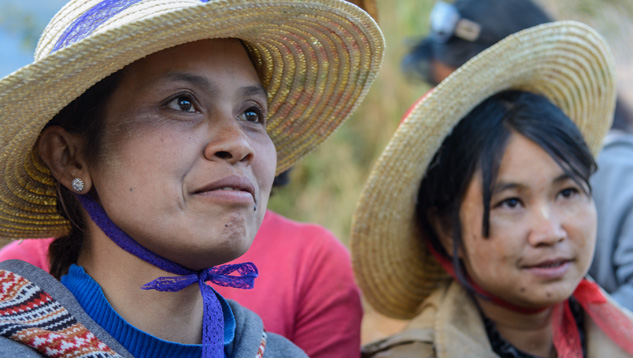
The kanase women were very friendly, but also tough negotiators. Photo by Andy Lucas, ©GIA.
At almost all the mining operations we visited, we saw kanase women hauling away tailings from the washing jigs and going through the pieces of marble. They would break the marble up into tiny pieces with hammers, looking for rubies or spinels. They actually crushed the marble into dust so that no gem, no matter how small, could escape them.One of the most striking images seen in this remarkably visual part of the world was the sight of the Kanase women at Baw Lone Gyi. The scene was an amazing array of color and contrast. The women removed large quantities of white marble from a washing area by pushing it with scrapers from a platform onto an open-bed truck. The truck took the marble a short distance to the area where the women would crush it with hammers into marble dust.
What made the scene so remarkable was the sight of the kanase women’s colorful attire and traditional hats, viewed against a sea of white marble with an incredible blue sky overhead and lush green vegetation and traditional wooden houses in the background. It was truly one of the most stunning sights I have ever experienced at a mining area.
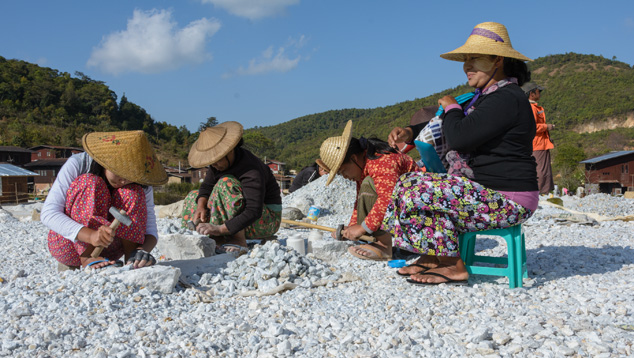
The colorful attire of the kanase women against the white marble and blue sky at Baw Lone Gyi made a striking scene. Photo by Andy Lucas, ©GIA.
The women commonly wore painted or cone-shaped hats, and their attire was often colorful as well. They sometimes brought their small children with them, and the children played near their mothers while they crushed the marble and worked through the tailings.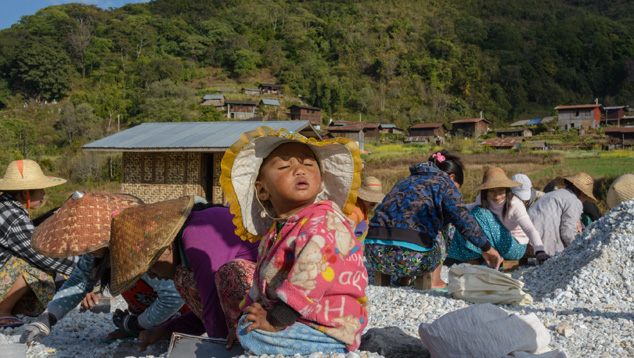
At Baw Lone Gyi, mothers worked hard while also tending to their children. Photo by Andy Lucas, ©GIA.
The kanase women offered us rubies and spinels, often still in the broken marble. They always proved to be astute negotiators. They would hold up the rough ruby or spinel crystal with its striking red color against the white marble host rock and offer it to us as prospective buyers. We also observed their traditional method of placing small crystals in their mouths for safekeeping while continuing to sort through the marble.We thoroughly enjoyed our trips to the Mogok mines, and our visits to the region's gem markets (covered in part three) were equally enchanting.
The Kanase Women
About the Authors
Vincent Pardieu is senior manager of field gemology at GIA's Bangkok laboratory, and Andrew Lucas is manager of field gemology in GIA education.
Acknowledgments
The authors thank the following for all their help: Jordan, a very good friend who was our driver, guide, and translator; Jean-Yves Branchard from Ananda Travels in Yangon, Myanmar, who helped us with permits and logistics; and, of course, the people of Mogok, who welcomed us and shared with us their knowledge and friendship.
